Mixing patterns in home decor can be simple and fun if you know where to start. Patterns like stripes, florals, or geometric shapes can add a unique, cozy feel to your space. Here’s a quick guide to help you mix patterns with ease.
Mix Patterns in Home Decor
Here are step-by-step mixing patterns for your home decor.
1. No Rules, Just Have Fun
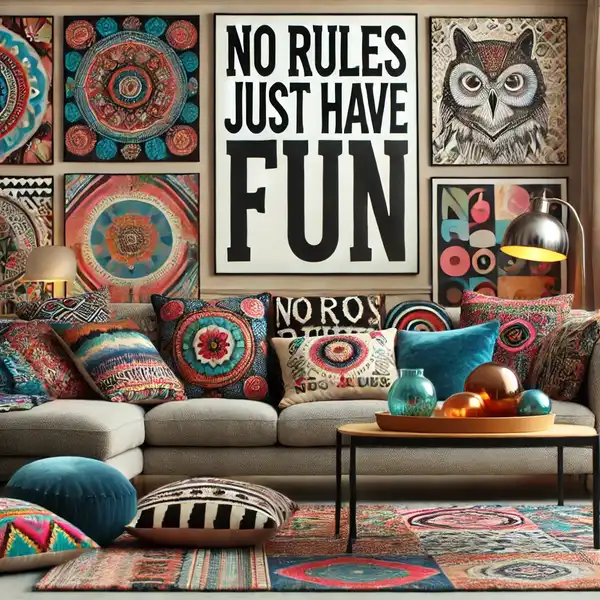
There are no strict rules when mixing patterns. Your home should reflect your personality. Try out different patterns and textures and trust what feels right for you. Create a space that makes you happy.
2. Give Patterns Some Space
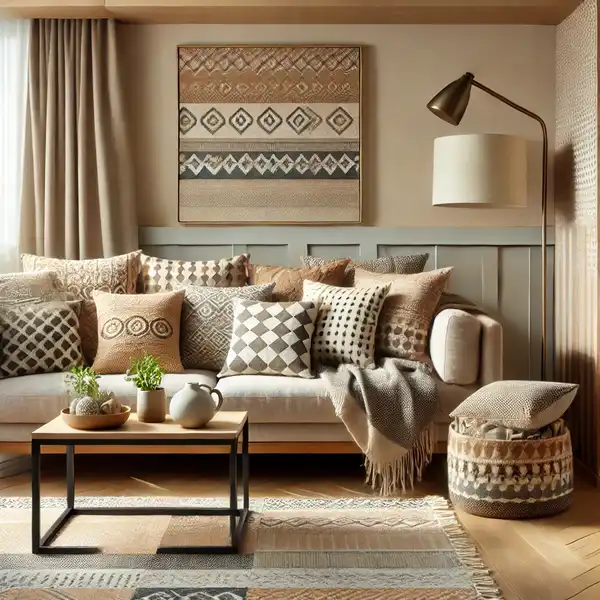
Avoid filling the room with too many patterns. Balance patterned items with solid colors or neutral pieces. For instance, pair a patterned couch with plain pillows or a simple rug. This helps the room feel calm and organized.
3. Start With a Bold Rug
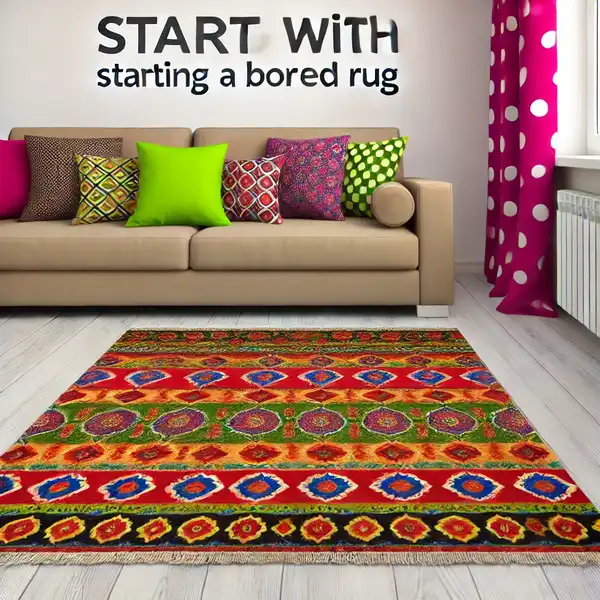
A patterned rug is a great starting point. It sets the tone for the rest of the room’s design. Once you choose a rug, you can pick pillows, curtains, or other decor that works with it.
4. Mix Big and Small Patterns
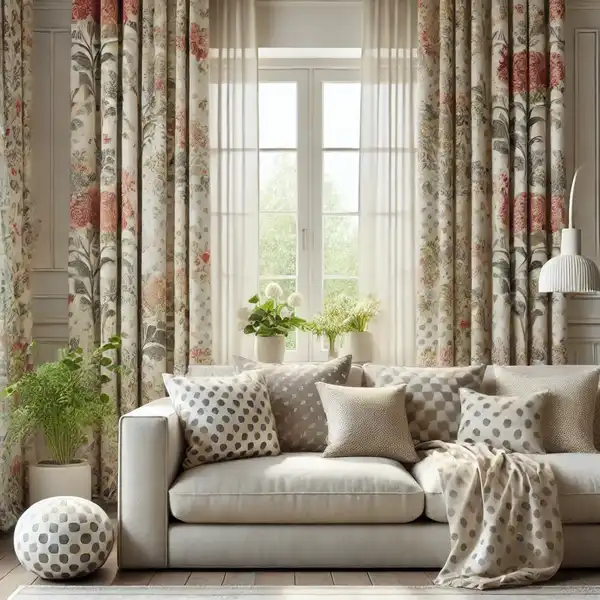
Pair large patterns with smaller ones for balance. For example, mix big florals with small dots or stripes. This keeps the room from feeling too busy while adding interest.
5. Start With the Showstopper Fabric
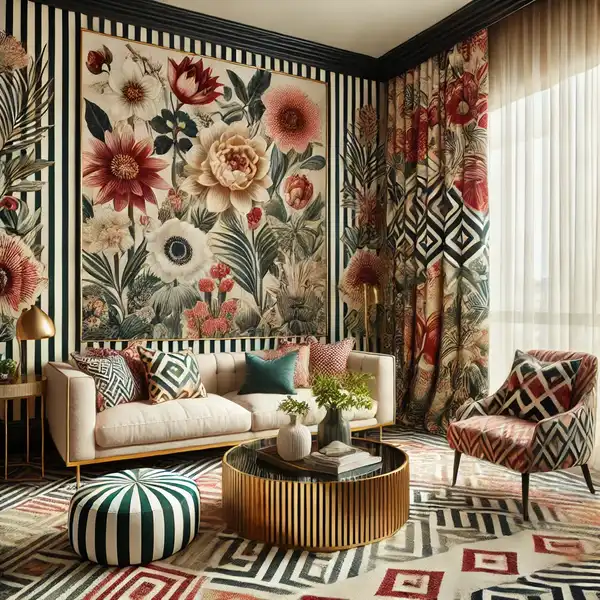
Choosing a “showstopper” fabric to build around is helpful when mixing patterns. This is the fabric that will draw the most attention. Once you have your main pattern, mixing in other complementary patterns becomes easier. For instance, if you start with a bold floral curtain, you can mix stripes, solids, or geometric designs that match its color scheme.
6. Find Other Fabrics to Mix With Your Showstopper Fabric
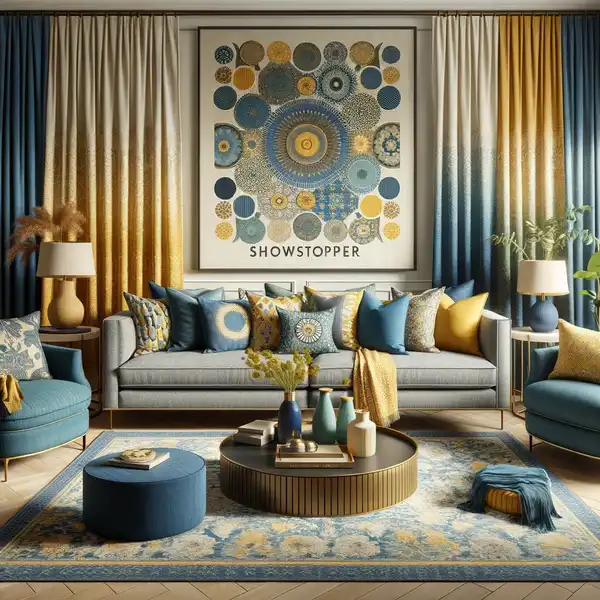
Once you’ve chosen your showstopper fabric, it’s time to find other patterns that work well with it. Look for patterns that have similar colors or tones. For example, if your showstopper fabric has blue and yellow, choose other fabrics with those colors. This way, all the patterns will work together and feel cohesive.
7. Keep the Color Palette Simple
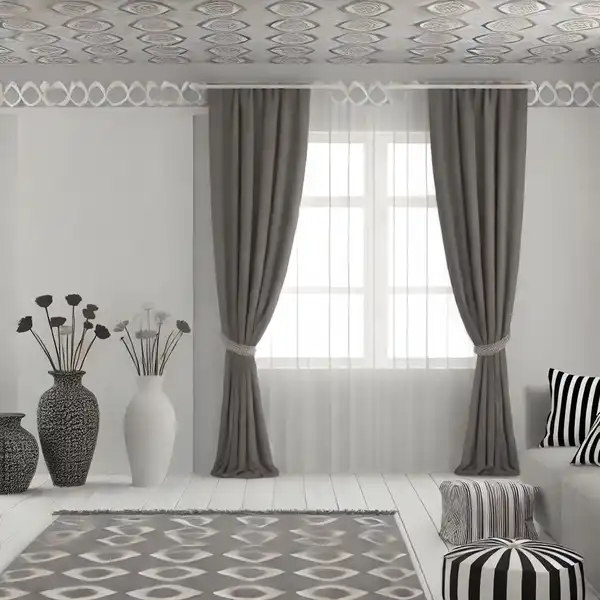
Keeping the color palette simple when mixing patterns is key to avoiding cluttering looks. Choose two or three colors and stick to them. Limiting your color choices allows you to mix various patterns without overwhelming the space. This also makes it easier to layer and add texture to the room. Sticking with a simple palette gives a polished and put-together look.
8. Take Pattern Scale Into Account
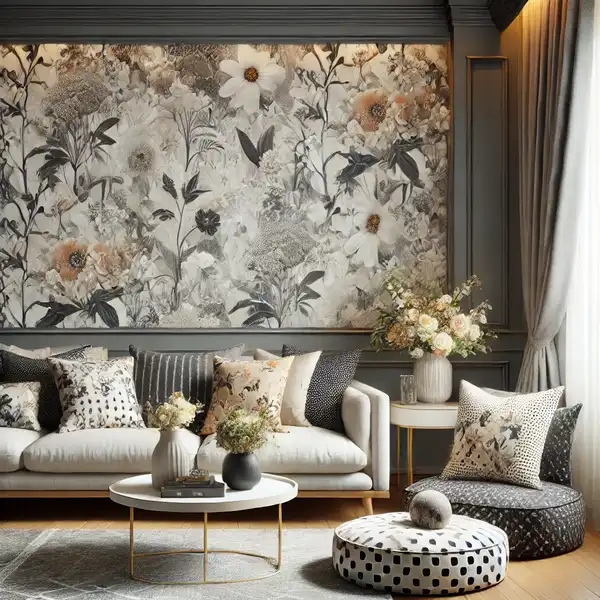
Another critical factor when mixing patterns is scale. The size of your chosen patterns should vary to create contrast and interest. A room with all large-scale patterns can feel heavy, while all small patterns might seem busy. Mix large, medium, and small-scale patterns to keep the design dynamic. For instance, pair a large floral pattern with tiny polka dots for a balanced look.
9. Narrow Down Your Pattern Choices

It’s easy to get carried away with pattern options, but narrowing down your choices will make the process easier. Start by picking a few patterns you love and work well together. Focus on making those patterns the star of your design. This way, you’ll avoid creating a space that feels too chaotic or mismatched.
10. Layer and Mix Patterns Slowly
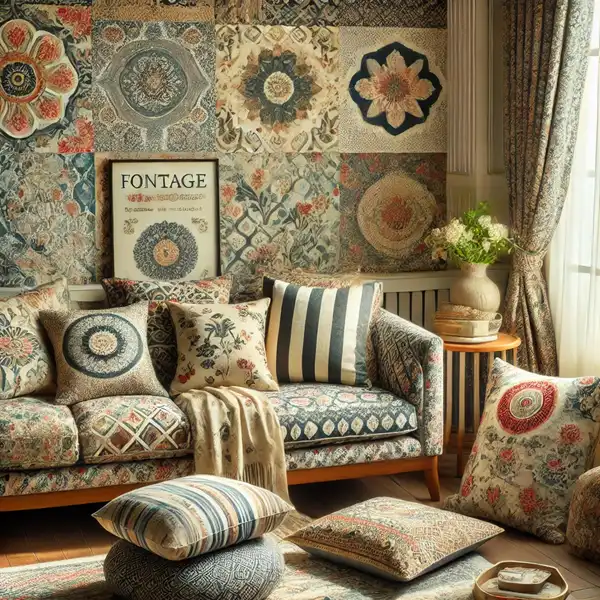
Mixing patterns doesn’t need to happen all at once. Take your time and layer them in slowly. Start with one or two patterns, like a patterned rug and throw pillows, and gradually add more. This method allows you to see how the patterns work together and adjust as needed. Layering also helps create depth and texture in your design.
11. Add Interest With Patterned Vintage Fabrics
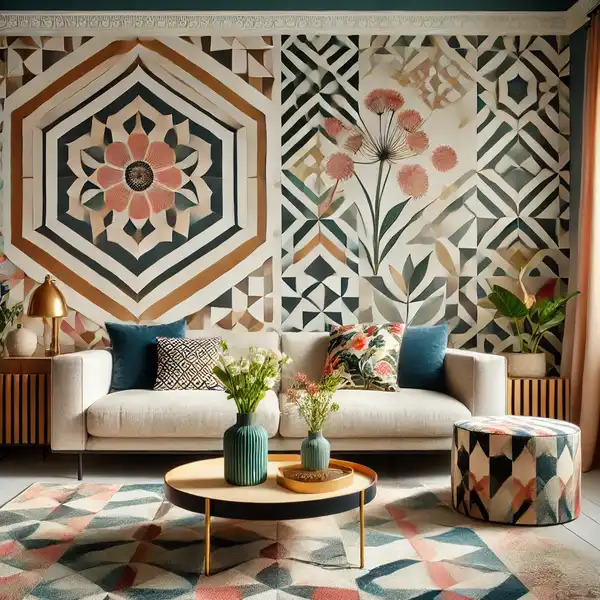
They often feature unique patterns that can make a room feel special. Look for vintage fabrics with classic patterns like florals, paisleys, or stripes. These can be mixed with modern patterns to create a stylish and timeless look.
12. Mix Opposites for Impact – and Balance
Using opposites is one of the best ways to create impact when mixing patterns. Pairing two different styles can make a room feel lively and balanced. For instance, try mixing a bold geometric pattern with a soft floral. The contrast between the two styles will make each one stand out. Just remember to keep the color palette simple to avoid overwhelming the space.
FAQs About: How to Mix Patterns in Home Decor
What’s the first step to mixing patterns?
Start with one main pattern, like a rug or wallpaper, and build the design from there. This helps guide the other patterns you add.
How do I balance patterns in a room?
Mix significant, bold patterns with small, simple ones. This keeps the room from feeling too busy.
Should I stick to a simple color palette?
Yes, choose 2 or 3 primary colors. It helps everything look tied together.
What does “pattern scale” mean?
It means the size of the pattern. Mix big, medium, and small patterns for a nice balance.
Can I mix old and new patterns?
Yes! Mixing vintage and modern patterns can look great. Just keep the colors similar.
How many patterns should I use?
Start with 2 or 3 patterns and add more slowly. Too many can overwhelm a room.
Can I mix patterns in small spaces?
Yes, just use fewer patterns and keep them simple to avoid clutter.
What patterns go well together?
Patterns that share the same colors and styles usually work well. Try mixing floral prints with stripes or geometric shapes.
How do I use patterns in minimalist design?
Use patterns sparingly in minimalist spaces. Stick to a neutral color palette and add a few patterned accents like pillows or rugs.
How can I add texture when mixing patterns?
Mixing textures with patterns adds depth. Pair patterned fabrics with textured ones like velvet or knits for a cozy feel.
Mixing patterns in home decor can be fun and rewarding when personalizing your space. By following these tips, you’ll be able to create a room that feels balanced, stylish, and unique. Remember, the most essential rule in design is that there are no strict rules. Don’t be afraid to experiment and find what works best for you. With some practice and patience, you’ll master the art of mixing patterns quickly!
Now that you know how to mix patterns, it’s time to implement these tips. Start with one of your favorite patterned pieces, like a rug or fabric, and build from there. Soon enough, you’ll create a home that reflects your style with the perfect mix of patterns!